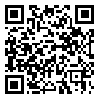Volume 2, Issue 2 (2014)
CLRJ 2014, 2(2): 79-104 |
Back to browse issues page
Download citation:
BibTeX | RIS | EndNote | Medlars | ProCite | Reference Manager | RefWorks
Send citation to:



BibTeX | RIS | EndNote | Medlars | ProCite | Reference Manager | RefWorks
Send citation to:
Akbar Shamian Sarookalai A, Alizadeh H. Nature and Creator Imaging in Sepehri's Poems and Kiarostami's Movies. CLRJ 2014; 2 (2) :79-104
URL: http://clrj.modares.ac.ir/article-12-12132-en.html
URL: http://clrj.modares.ac.ir/article-12-12132-en.html
1- Assistant Professor of Persian Language and Literature, University of Birjand, South Khorasan, Iran
2- Ph.D. Student of Persian Language and Literature, Ferdowsi University of Mashhad, Mashhad, Iran
2- Ph.D. Student of Persian Language and Literature, Ferdowsi University of Mashhad, Mashhad, Iran
Abstract: (12807 Views)
Sohrab Sepehri and Abbas Kiarostami are artists who could express their thought in the form of another language using the myths and symbols. The most important considerations in their works are neutral symbols. In this paper, the authors tried to review the symbolic nature using comparative approach and Gaston Bachelard's theory. We analyzed Hasht Keteb and Kiarostami's movies, and found that the mythical structure and contents briefly express differences and commonalities in their works. The most applicant natural symbols widely used in these works consist water, air, soil and plants. The results of our study showed that Water and soil, in various forms, involve a dual role in poetry and cinema: both as a symbol of death and resurrection, and creation. Wind is the symbol of divine origin and evolution. Also it indicates the death and destruction. Plant is the symbol of cosmic tree. Symbolic imagery and mythical nature, in Kiarostami's films and Sepehri's poems, can affect the poetic spirit of two artists, which is result of thier familiarity with Eastern mysticism and also for being influenced by painting and photography skills.
Keywords: Imagination, Intersexuality, Gaston Bachelard, Poetry and cinema, Sepehri's poems, Kiarostami's cinema
Article Type: Research Paper |
Subject:
-
Received: 2013/11/18 | Accepted: 2014/04/23 | Published: 2014/09/23
Received: 2013/11/18 | Accepted: 2014/04/23 | Published: 2014/09/23
| Rights and permissions | |
 |
This work is licensed under a Creative Commons Attribution-NonCommercial 4.0 International License. |








